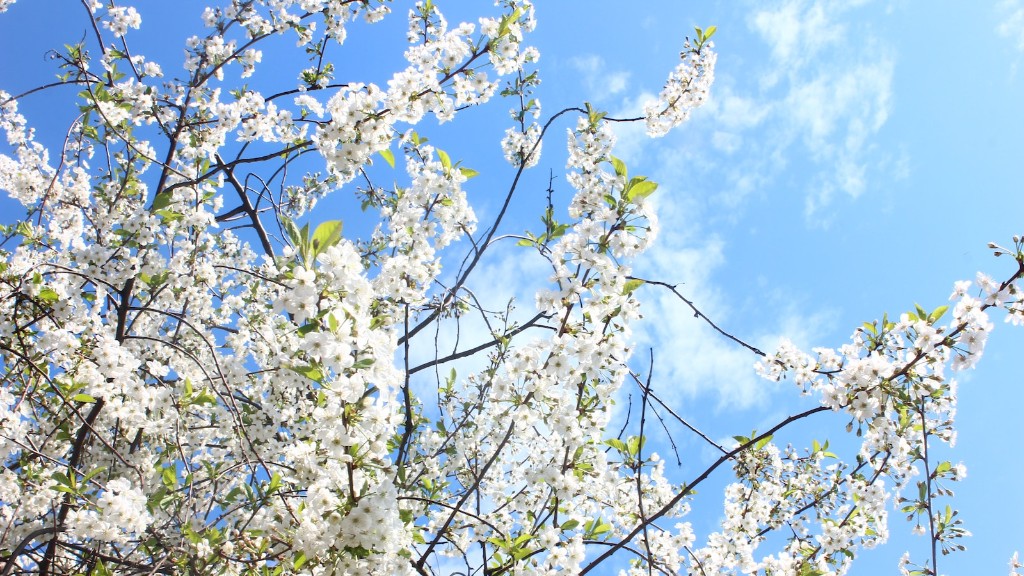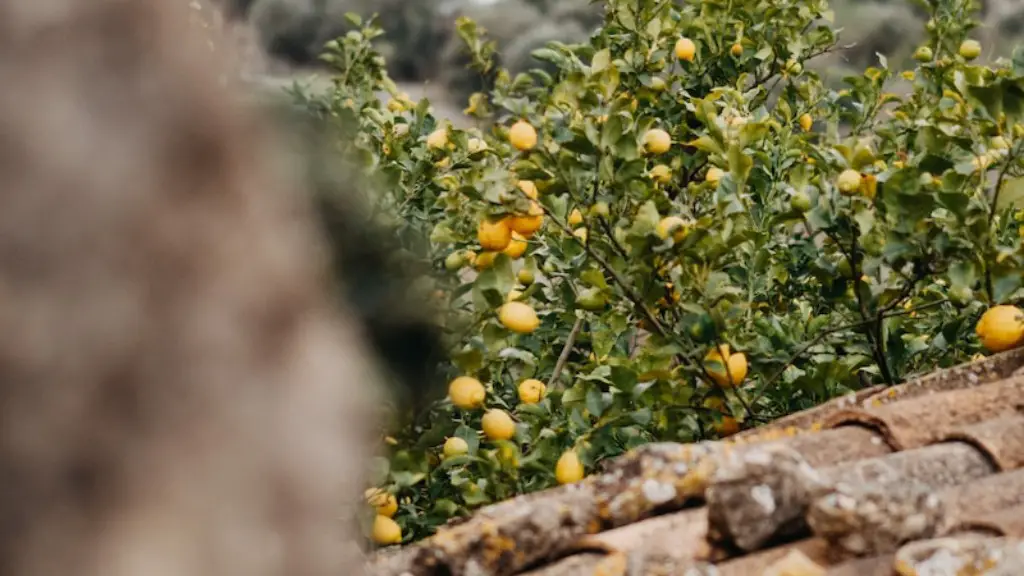Caring for a lemon tree is a rewarding process that yields a wealth of juicy and tart fruits. The process starts with selecting the right tree, and extends through proper planting, fertilizing, and pruning. If carefully tended, your lemon tree will provide delightfully refreshing and versatile fruits for many years to come.
First and foremost, it’s essential to choose a lemon tree that’s appropriate for your climate and soil type. Lemon trees are considered subtropical or tropical and thrive in warm temperatures and in ample sunlight. Moving your tree between the outdoors and indoors is not advised as it disrupts and stresses the tree, reducing its productivity.
Next, your lemon tree should be planted in well-draining soil and watered regularly. Watering should be a bit more frequent during warm summer days and less in winter. But, avoid overwatering or under-watering, as either can harm the tree’s health. After the initial planting, a slow-release fertilizer should be applied and repeated every two to three months.
To ensure the proper growth and increase productivity of your lemon tree, it’s important to prune it regularly. Start pruning by removing any dead branches and any crossed, diseased or vigorous branches. Thinning your tree is also something to consider in order to let more light and air penetrate. Lastly, spraying fungicides or insecticides might be necessary depending on the climate and the area the tree is growing in.
With proper care and maintenance, your lemon tree can deliver lemon fruits for years to come. Furthermore, by following the above steps you can have a healthy and productive lemon tree. With a little effort and time, you can reap the rewards of your hard work.
choose a lemon tree
When selecting a lemon tree to bring into your home, knowing your climate is key. As lemon trees prefer tropical climates, it’s best to choose a variety that is suited to your area. This can be found through research or consulting a local nursery which specializes in citrus trees. Additionally, purchase a lemon tree that is labeled as “disease-resistant” as it is less likely to require extra attention.
If you choose a container tree, you will be able to maintain its size by controlling the soil type in the pot. When opting for a lemon tree to be planted in the ground, it’s important to look out for pests and diseases that could impact its growth or quality of fruits. Additionally, in order to ensure plenty of sunlight, choose the correct location to avoid blocking the areas with potential shades.
Another crucial step in bringing a lemon tree into your home is acclimatized it. To do this, gradually introduce the tree to more direct sunlight over a few days. This is important as it prevents sudden shock to the tree’s system and reduces the chances of it burning.
Plant and fertilize
There are several different methods of planting a lemon tree depending on your preference, and the size of the tree. If it’s a large tree, it’s best to dig a hole in the ground with a two- to three-foot radius and deep enough to cover the entire root ball. If you are planting in a pot, make sure the materials used are highly permeable, so you can maintain the right level of water and nutrition.
Once your chosen spot is prepared, you can transfer the lemon tree. If you chose to plant in the ground, make sure to fill the hole around the tree while covering the root ball. To improve drainage, you can add mulch around the tree. After the planting process is complete, it’s time to give the tree nutrients. This can be done in either pot or ground, using slow release fertilizers or organic materials.
Using slow release fertilizers should be done every one to three months depending on the soil type, and the fertilizer chosen. Applying organic materials is ideal for container plants, as these leach out at a much slower rate. When using organic materials, make sure to mulch the base of the tree, and keep a five inch distance between the stems and roots. This allows proper air circulation, and prevents overwatering.
Watering and pruning
Making sure your lemon tree receives enough water is vital to its health. Water levels depend on the soil type and climate, and while it’s important to avoid underwatering, over-watering will harm the tree and reduce the quality of its fruits. Generally, lemon trees require water every two to three weeks. When in doubt, stick to the golden rule: when you see the top two inches of soil are dry, it’s time to water.
In addition to watering, careful pruning is necessary to ensure your lemon tree grows to its maximum capacity without forming any dead branches, or becoming overcrowded. Pruning should be done in early spring, and should involve harsh thinning to avoid overcrowding. Allowing sufficient light and air to pass through are important in the production of juicy and sweet lemons, and this is only achievable with regular and careful pruning.
Next, all diseased and dead branches should be removed, as this helps reduce the overall risk of pests, and helps the tree put its energy into the healthy branches and fruits. The best indication of a dead branch is the fact that it’s dry, and does not show any new growth. In some cases, a fungicide or an insecticide is needed to be sprayed on the tree for maximum results.
If you are using chemicals, take extra precaution as it can have a direct effect on the overall health of your tree. Lastly, when outdated leaves are removed, measure their size and discard any that are smaller than 3 inches. Aside from preventing diseases from forming, this will also encourage more development and growth.
Protect from pests and diseases
Due to the prevalent nature of pests and diseases, it’s essential to equip your lemon tree with adequate protection. During the flowering period, you should look out and remove any eggs that may be present. Additionally, keep an eye out for ants, scales, and aphids as they can be risky when developing or grown trees.
Abnormal leaves can also be an indication of the presence of pests, so keep an eye out for any discolorations or deformations that may appear. If these signs appear, spray the tree with the necessary insecticides or fungicides, and act quick as this could further spread to other parts.
Furthermore, you should take extra precautions to protect your tree from diseases such as root rot, black spot, and powdery mildew. As many of these can come from the roots, it’s best to keep a close eye on any changes in the base of the tree. Regularly examine the soil and make sure that the pH level is close to 6.5.
Although it looks like a lot of care, with a keen eye and correct maintenance, you can protect your lemon tree from diseases and pests. Make sure to apply the necessary tools and surfaces so that you can detect any signs before they become a larger issue.
Harvesting and propagating
When it’s time to harvest your lemon tree’s fruits, it’s essential that you know the right time and the correct way to do it. To know the ideal time for harvesting, wait until the lemon is large, and its skin has a nice yellow hue. Additionally, it should feel firm when touched, without any soft spots.
When picking the fruits, always use scissors, and cut the lemon as close to the branch as possible. Additionally, by picking fruits with some of their stems still attached, it will be easier to clean. To clean, rinse the lemon with a damp cloth or sponge while rubbing the surface gently. After, leave it out to dry completely before slicing.
If you wish to propagate your lemon tree, the best way to do it is by taking cuttings or layering. Cuttings require taking the branch of an already-thriving tree and growing it in new soil. Layering requires taking the lower parts of a growing branch and burying it in the new soil and allowing roots to form on the branch. After the root system is developed and strong, the branch can be cut below the roots and planted as a new tree.
Lastly, lemon trees can also be propagated from seeds. To do this, pick a fully-ripened lemon and plant it in moist soil. After germination, it should be transplanted in a bigger pot and given lots of sunlight and warm temperatures. When ready, it must be planted in an area where it can get the adequate sunlight and watering.


